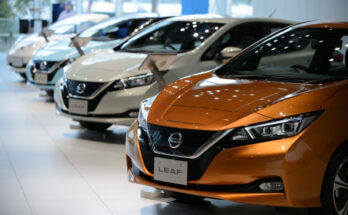BloombergNEF has released its 7th annual Electric Vehicle Outlook. While the study also makes longer-term predictions, here is where its researchers think the global electric vehicle adoption is going between now and 2025.
The number of consumers looking to buy EVs globally has hit 52%, according to the latest EY Mobility Consumer Index (MCI). This is the first time 50% has been exceeded, and it represents a rise of 22 percentage points in just two years. BloombergNEF’s findings are consistent with the EY study, as BloombergNEF asserts that electric vehicle adoption is set to continue to rise sharply to 2025 as global policy pressure grows, more electric car models become available, and consumer interest increases.
Related: 5 Best-Selling EVs of the World in 2022
Bloomberg NEF projects that plug-in vehicle sales will rise from 6.6 million in 2021 to 20.6 million in 2025. Plug-in vehicles are predicted to make up 23% of new passenger vehicle sales globally in 2025, up from just under 10% in 2021. Three-quarters of those will be fully electric. The researchers don’t see plug-in hybrids gaining a significant share of the market outside Europe, and they expect them to peak globally around 2026. Fuel cell vehicle sales are expected to increase slightly due to a push in China, but overall, will have no meaningful impact in the passenger vehicle segment.
EV adoption will vary by country
The share of electric vehicle sales in some markets will be higher, with EVs reaching 39% of sales in 2025 in China and Europe. Whereas Germany, the UK, and France are predicted to reach between 40-50% in 2025. China and Europe are anticipated to account for a whopping 80% of EV sales in 2025, with adoption lagging elsewhere.
Related: Bestselling EV Makers of the World- Q1, 2022
The US market is forecast to be a bit of a laggard. It’s expected to pick up from 2023 but will likely still only represent 15% of the global electric vehicle market in 2025. The EY study noted that consumers in Australia (38%) and the US (29%) are the least committed to switching to EVs. Bloomberg NEF asserts that the rising cost of batteries will not derail near-term EV adoption. Its researchers write in the report’s executive summary:
“Some of the factors that are driving high battery raw material costs – war, inflation, trade friction – are also pushing the price of gasoline and diesel to record highs, which is driving more consumer interest in EVs. Internal combustion engine vehicles are also becoming more expensive to produce. The acceleration in EV adoption means that combustion vehicle sales peaked globally in 2017 and are now in permanent decline. By 2025 passenger ICE sales are 19% below their 2017 peak. Managing the decline while investing in the future is a major challenge for some legacy automakers.“
The Bloomberg NEF researchers feel that the most important factor to note is the market shifting from being driven by policy to being driven by consumer demand. They rightfully point out that supply is now a greater constraint than demand in most markets. Until automakers can start to produce EVs at a scale and price range that meets demand (alongside the charging infrastructure for those new cars), a large number of consumers will have to wait a couple years – but not much longer– to drive electric.
Source: Electrek

A computer animation professional with over 23 years of industry experience having served in leading organizations, TV channels & production facilities in Pakistan. An avid car enthusiast and petrolhead with an affection to deliver quality content to help shape opinions. Formerly written for PakWheels as well as major publications including Dawn. Founder of CarSpiritPK.com




